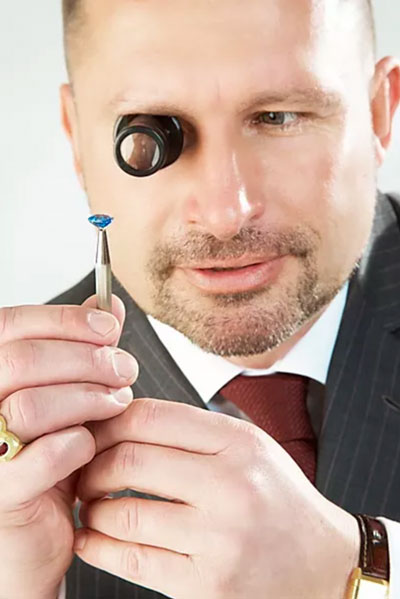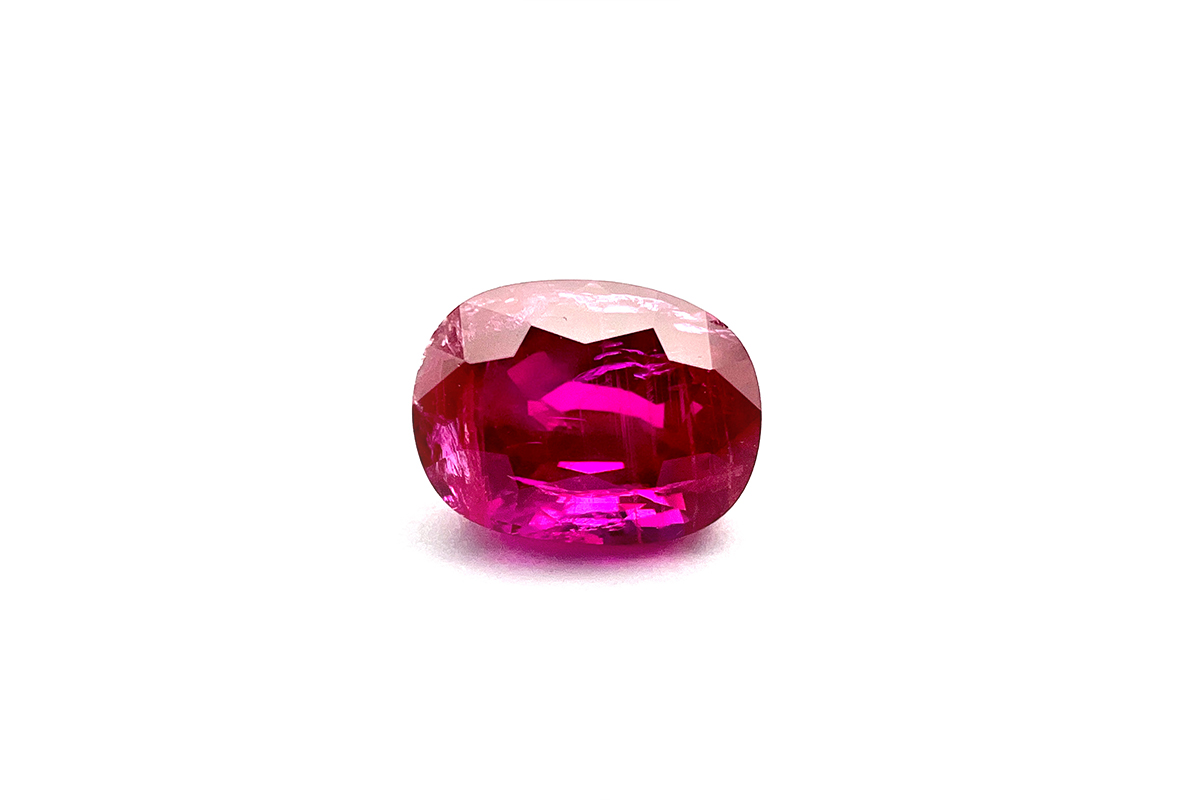Knowledge
04.01.2023 Gemstone identification
Ruby is much more valuable than spinel. Until the 19th century, however, it was not possible to distinguish between the two gemstones. Today, however, because we know the unique physical and optical properties of the different types of gemstones, each stone can be clearly identified.
The identification of gemstones is one of the fields of application of gemology.

Distinguish gemstones from each other
A gemologist uses various tools and techniques to determine colored gemstones. With the appropriate equipment and expertise, it is possible to determine whether a stone has been treated and sometimes even its geographic origin. Optical, physical, chemical and crystallographic properties of the gemstone in question are used for classification.
The more information available about a stone, the easier the determination. For the correct identification of gemstones it is often necessary to combine several methods. An essential part of the examination is also to distinguish genuine stones from imitations and syntheses.



The optical properties of a gemstone
The optical appraisal is usually in the first place in the determination of a gemstone. Specific characteristics such as color or transparency already narrow down the range of choices.
The most important tool of a gemologist is the magnifying glass, with those with 10x magnification being the common standard. Under the magnifier, a gemstone is examined for features such as inclusions, cracks, or color zoning.
Careful inspection under a microscope can reveal irregularities that would not be visible to the naked eye. Not only can the type of gemstone be concluded from the inclusions, they can also be characteristic of a certain origin.

Density determination
Different minerals each have their specific mass (density). Density can be determined thanks to Archimedes’ principle by placing the gemstone in a liquid and measuring the amount of liquid it displaces. In the laboratory, either a density balance is used for this purpose or “heavy liquids” are used.
The specific mass can then be compared to the density of the mineral in the literature to distinguish the gem from other similar stones.

Measurement of light refraction with polariscope & refractometer

The crystal structure of a gemstone significantly determines how it refracts incident light. Measuring the refractive index using a refractometer is then one of the first steps in determining a stone.
Some gemstones are single refractive, the majority are birefringent. This means an incident beam of light is split into two beams, which behave differently. Birefringence can be checked using a polariscope or even simple filters.
The values can then be compared with tables of specific refractive indices of gemstones.

Spectroscopy
Colored gemstones absorb incident light in different ways. Depending on the chemical composition and crystal structure, a certain absorption spectrum results. This not only determines the color of a gemstone, but is also used for its determination.
The absorption spectrum of a gem measured by a spectroscope can be compared with reference spectra for common gemstones.
In addition to the methods listed here, gemological laboratories sometimes use special high-tech equipment that can verify characteristic properties of a gemstone beyond doubt.



Distinguish varieties
Sometimes it is only individual aspects that determine the identity of a gemstone. The classic example of this is the distinction between ruby and sapphire.
Both gemstones are varieties of corundum. The color alone serves as the distinguishing feature. Red corundum is called ruby, all other colors are called sapphire. Thus, distinguishing between a pink sapphire and a ruby can be difficult.
The major gemological institutes have attempted to create standards by which the identity of a stone can be clearly determined. In addition to using reference stones, laboratories are now attempting to measure the number of chromium atoms in the stone.
However, since there is as yet no international agreement on this, it is therefore up to the certified institute to decide whether a stone is classified as a pink sapphire or a pale red ruby.

Be safe thanks to a certificate
If you want to buy a gemstone as an investment, be sure to look for stones with a suitable certificate or grading report of a recognized gemmological institute or laboratory!
Only in this way you can be sure as a layman to get the gemstone that you really want and are safe from misrepresentation. In a gemstone certificate is not only the type clearly determined, but there are also statements about authenticity, quality and treatment.


